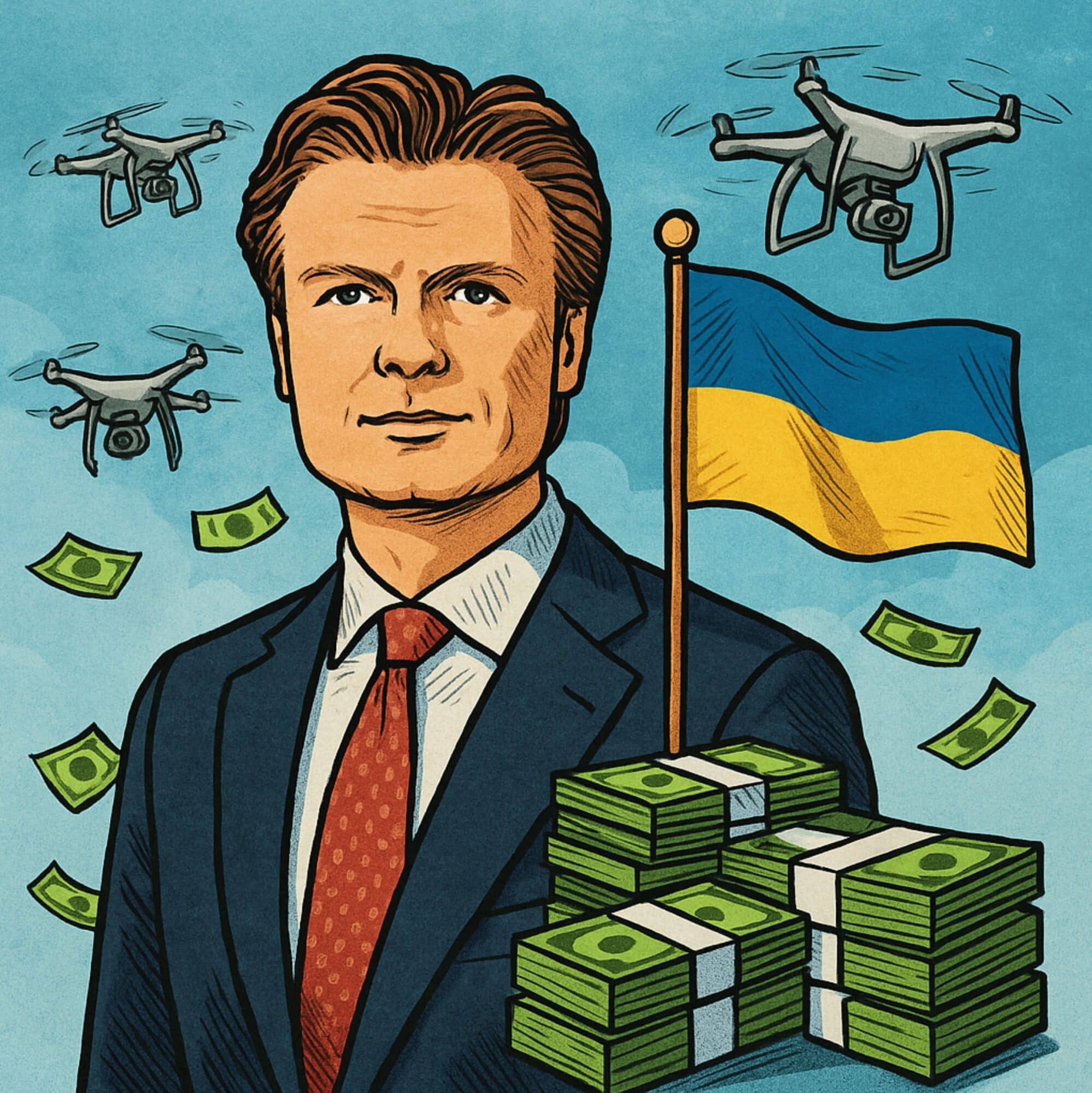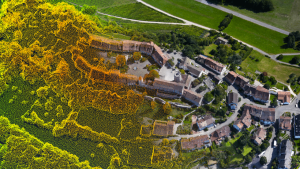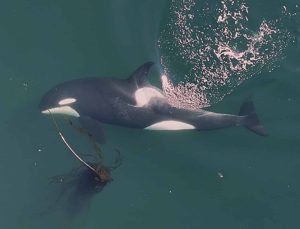Netherlands Bolsters Ukraine With $202M Drone Defense Aid Package: A Deep Dive
On June 24, 2025, the Netherlands announced a significant €175 million ($202 million) aid package centered on drone defense for Ukraine, reinforcing its role as a key ally in Kyiv’s ongoing struggle against Russian forces. Let’s explore the components, importance, and potential impact of this package and understand why it’s pivotal for Ukraine and the evolution of drone warfare.
Unpacking the $202 Million Aid Package
What’s Included?
- 100 Advanced Drone Detection Radars: Scheduled for delivery by the end of 2025, these cutting-edge radars will detect incoming drones, providing critical data to Ukraine’s air defenses for effective interception. This technology specifically addresses the growing threat posed by small, agile drones that are reshaping modern conflicts.
- 80 Million Euros ($92.5 Million) for Drone Coalition Support: A considerable share of funding is allocated to support the international drone coalition, fostering Ukraine’s advancements in unmanned aerial systems.
- 20 Semi-Autonomous Medical Evacuation Vehicles: These Ermine CASEVAC modular vehicles enhance Ukraine’s ability to conduct life-saving operations on the battlefield.
- Contracted Drone Production with Ukrainian Companies: A strategic move to not only arm Ukraine but also develop its defense technology sector for the future.
Why Drones and Drone Detection Matter
Drones have dramatically changed dynamics in modern conflict zones, especially in Ukraine. No longer limited to intercepting missiles or jets, air defenses now face nimble UAVs (unmanned aerial vehicles) that can slip past traditional radars, drop ordnance, conduct surveillance, or disrupt critical infrastructure.
- Detection Radars: The Dutch-supplied systems are believed to include the IRIS Drone Radar from Robin Radar Systems, compact and mobile X-band radars capable of detecting drones as small as 1.5 kg from up to 2 km away, and larger (3 kg) drones at 4 km. These radars can be mounted on vehicles and operate on the move, which is crucial for Ukraine’s dynamic combat environment.
- “Drone Line” Initiative: Supported by Dutch funding, this initiative envisions the production of 600,000 Ukrainian-made drones, ranging from reconnaissance to strike models, significantly boosting Ukraine’s position in drone manufacturing.
The Numbers: Scope and Scale
| Item | Quantity/Funding | Purpose |
|---|---|---|
| Drone Detection Radars | 100 units | Boost air defense, detect enemy UAVs |
| Medical Evacuation Vehicles | 20 units | Frontline casualty evacuation |
| Drone Coalition Support (Euro) | 80 million (€) | Local & coalition drone R&D |
| Ukrainian-made Drones (planned, larger project) | 600,000 | Recon, strike, and special ops drones |
| Total Package Value | €175 million ($202 million) | Immediate aid (not including prior aid) |
Real-World Impact: A Technological Edge for Ukraine
1. Operation Spiderweb: Redefining Modern Warfare
In early June 2025, Ukraine executed Operation Spiderweb, a drone initiative that targeted 41 Russian aircraft, impacting parts of Russia’s nuclear triad. This operation showcased the potential of new drone technologies to disrupt powerful military assets with UAV swarms and smart detection tools.
2. Ukrainian Innovation, Dutch Support
Ukraine’s battlefield is transforming into a proving ground for drone warfare, with increased UAV manufacturing, long-range strike capabilities, and a blend of Western and locally developed technologies granting Kyiv a strategic advantage. The Netherlands’ support is not only acquisitional but also developmental, fostering Ukraine’s technological capabilities
for sustained growth.
Figures, Facts, and the Bigger Picture
- The Netherlands’ Total Aid to Ukraine: Since 2022, Dutch support has exceeded €10 billion, encompassing humanitarian aid, air defense systems (such as Patriot and HAWK), and F-16 fighter jets.
- NATO Context: The aid announcement coincided with a NATO meeting in The Hague, highlighting features like defense spending targets and coalition support for Ukraine, with proposals to account for Ukraine-related defense aid in NATO commitments.
- Drone Coalition: Established within the Ukraine Defense Contact Group (“Ramstein group”), this coalition maximizes international resources and expertise to sustain Ukraine’s forefront position in technology.
Expert Voices: What Leaders Are Saying
“Delivery of the radars… is expected to be completed by year-end,”
— Dutch Minister of Defence Ruben Brekelmans
Ukrainian Defense Minister Rustem Umerov expressed gratitude for the Netherlands’ contribution towards enhancing Ukraine’s technological advantage on the battlefield and emphasized the magnitude and rapidity of the new “Drone Line” manufacturing initiative.
What Makes This Package Unique?
- Focus on Mobility and Survivability: The radars’ mobility enables swift relocation, essential due to frequent Russian strikes on static defenses.
- Frontline Medical Support: Semi-autonomous CASEVAC vehicles reduce risk for medics, enable faster evacuations, and save more lives.
- Investment in Local Industry: Contracts with Ukrainian firms ensure job creation and technological advancement domestically, beyond short-term imports.
- Rapid Timeline: All deliveries and setups are planned for completion within a year, a crucial period as Ukraine braces for future conflicts.
Looking Ahead: The Future of Drone Defense
As Ukraine prepares to “flood the skies” with a fleet of 600,000 drones, supported by Dutch funding, this conflict is reshaping the strategies of 21st-century warfare. Lessons in rapid innovation, coalition support, and adapting to emerging threats will likely redefine global military approaches to air defense.
The Human Side: Courage, Partnerships, and Resilience
Beyond the technicalities, this strategic partnership stands on the dedication of individuals—Dutch experts, Ukrainian engineers, and field medics—collaborating under immense pressure. The Netherlands’ steadfast backing through funding, technology sharing, or joint ventures underscores that at its heart, defense is about safeguarding lives and upholding common principles.
Conclusion
The Netherlands’ $202 million drone defense initiative marks a significant milestone in the Ukraine conflict, setting new standards in technological cooperation, urgency, and strategic innovation. As drones redefine warfare, this assistance signals to allies and foes: innovation, alliance, and persistence are Ukraine’s strongest assets.
For ongoing updates and insights into Ukraine’s defense transformation, follow trusted news platforms and official government sources.













